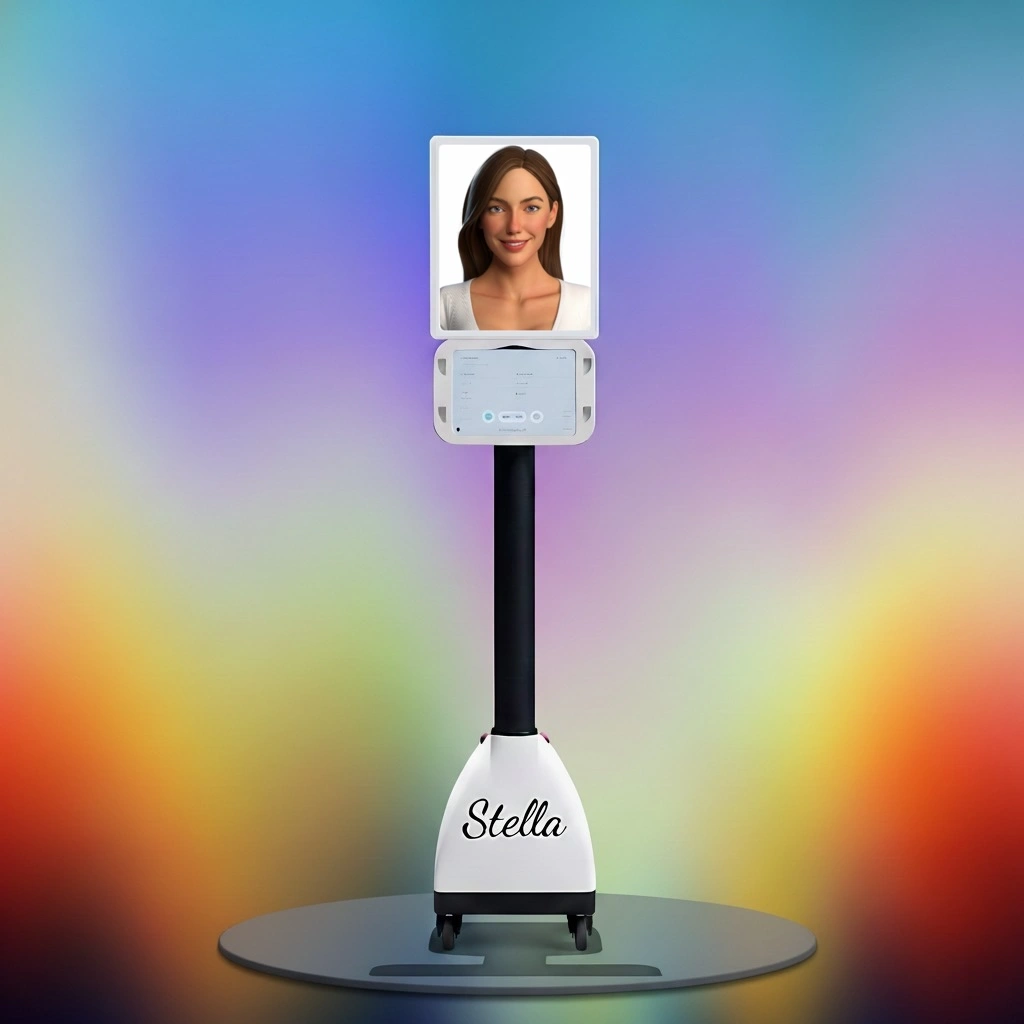Let's Talk About Aisle 7
You know the one. It’s the aisle that time forgot. It sits somewhere between the high-traffic power tools and the fast-moving PVC fittings. It’s your store’s own little Bermuda Triangle, where perfectly good inventory goes to die a slow, dusty death. We’re talking about that case of “revolutionary” self-hammering nails you bought at that trade show in Vegas, the 50-gallon drums of industrial-grade floor cleaner (for the two local factories that both closed last year), and that… weirdly specific plumbing adapter for a faucet discontinued in 2008.
This, my friend, is dead stock. And it’s not just an eyesore; it’s a silent assassin of your cash flow. It’s capital, tied up in metal and plastic, doing nothing but taking up precious shelf space that could be used for products that actually, you know, sell. Industry analysts estimate that dead or obsolete inventory can tie up anywhere from 20% to 30% of a retailer's capital. That's a staggering amount of money just sitting there, collecting dust instead of earning interest—or better yet, being reinvested into your business. But fear not. We’re here to help you perform a little retail necromancy: raising that dead stock from the grave and turning it back into profit.
Diagnosing the Dust: How Dead Stock Happens in the First Place
Before you can cure the disease, you have to understand the cause. Dead stock doesn’t just magically appear. It’s the result of a series of well-intentioned, but ultimately flawed, decisions. Let’s pull on our diagnostic gloves and examine the common culprits.
The "It Seemed Like a Good Idea at the Time" Purchase
Ah, the siren song of the bulk discount. Your supplier calls with an offer you can’t refuse: “Buy a pallet of these new-fangled, Bluetooth-enabled tape measures and get a 40% discount!” Your eyes turn into dollar signs. You envision them flying off the shelves. Except they don’t. Now you’re the proud owner of 200 smart tape measures that your core customers—contractors who just want something that won’t break when they drop it—wouldn’t touch with a ten-foot pole.
This category also includes chasing trends that don’t fit your customer base. Remember that brief period when everyone thought solar-powered garden gnomes were the future? We do. Misreading your market or getting swayed by a slick sales pitch without consulting your own sales data is the number one cause of inventory pile-ups. Gut feelings are great for deciding on lunch, not for making six-figure inventory buys.
The Seasonal Hangover
Hardware stores are beautifully seasonal businesses. Ice melt and snow shovels in the winter, fertilizer and garden hoses in the spring. The problem arises when your forecasting is a little… optimistic. You order enough snow shovels to survive a blizzard of apocalyptic proportions, only to be met with the mildest winter in a decade. Now it's July, it's 95 degrees out, and you’ve got a mountain of shovels blocking the path to the air conditioners people actually want to buy.
This “seasonal hangover” costs you in two ways: first, the initial capital outlay is stuck until next winter (if you’re lucky). Second, that prime retail space is being occupied by off-season goods, forcing you to cram your in-demand summer items into less visible spots. It’s a classic case of yesterday’s opportunity becoming today’s liability.
The Slow Creep of Obsolescence
This is the most insidious cause of dead stock because it happens so gradually you barely notice it. One day you have a perfectly good set of brass faucet fittings; the next, chrome and brushed nickel are the only finishes anyone wants. That line of halogen work lights you’ve carried for years is suddenly being ignored in favor of brighter, more efficient LED models. Changes in technology, design trends, or even local building codes can render your inventory obsolete almost overnight.
The key here is that the products aren't necessarily "bad." They're just "not what people want anymore." Unlike a bad purchase you can learn from immediately, obsolescence creeps in, slowly turning your once-valuable assets into historical artifacts.
The Art of the Strategic Sell-Down
Okay, so you’ve identified the piles of profit-sucking products. Now what? You can’t just wish them away. It’s time to get proactive and aggressive. The goal isn’t necessarily to recoup your full cost—it’s to convert that dead asset back into liquid cash as efficiently as possible. Sometimes, getting 50 cents on the dollar is an incredible win compared to getting zero.
Let Your Robot Do the Talking
Let's be real: your staff is busy helping customers find the right lag bolt or mixing a custom paint color. They don't always have the time or the mental bandwidth to remember, "Oh, I should also mention we have a 40% discount on last season's leaf blowers." This is where an in-store assistant can be a game-changer.
Imagine every single customer who walks through your door being greeted by a friendly, helpful presence that never forgets to push a promotion. That's where Stella comes in. You can program your robot assistant to make your clearance items part of her greeting. For example:
- "Welcome to Acme Hardware! Just so you know, all of our premium brand caulking is 50% off this week while we make room for new stock. You can find it in Aisle 4!"
- "Planning a weekend project? Before you get started, check out our manager's special on 5-gallon buckets of exterior paint—they're a steal right now!"
This turns a passive clearance sign that most people ignore into an active, engaging promotion. Stella can highlight a different slow-moving product each day or week, ensuring that your efforts to clear out old stock get maximum visibility without any extra effort from your human team. She can even point customers in the right direction, transforming that "aisle of forgotten dreams" into a high-traffic treasure hunt.
Preventing a Relapse: Keeping Your Shelves Lean and Mean
Clearing out your current dead stock is great. But it's a temporary fix if you don't change the habits that created it. The ultimate goal is to prevent a relapse and maintain a healthy, profitable inventory flow year-round. This requires a shift from reactive cleanups to proactive management.
Embrace the Data (It Doesn’t Bite, We Promise)
Your Point of Sale (POS) system is more than a cash register; it’s a treasure trove of data. It knows exactly what’s selling, how fast it’s selling, and what’s been sitting on the shelf since the last presidential administration. It’s time to use that data.
Start by running a sales velocity report. This will show you how quickly items turn over. Use this to perform an A-B-C analysis:
- 'A' Items: Your top 20% of products that generate 80% of your sales. Never run out of these. These are your bread and butter—your DeWalt drill bits, your 3-inch deck screws, your 5-gallon buckets.
- 'B' Items: The middle-of-the-road sellers. Important, but less critical than 'A' items. Monitor them closely.
- 'C' Items: The bottom feeders. These are your slowest-moving products, the ones that might sell once a quarter. These are your prime candidates for becoming dead stock.
Once you’ve categorized your inventory, you can make smarter decisions. Set aggressive reorder points for 'A' items, be more conservative with 'B' items, and for 'C' items, consider a "one-in, one-out" policy or even discontinuing them altogether. Stop relying on your gut and start relying on the numbers.
Adopt a "Just-in-Time-ish" Philosophy
True "Just-in-Time" (JIT) inventory, where products arrive exactly when they're needed, is a fantasy for most independent hardware stores. You don't have Amazon's supply chain. But you can adopt the principles of JIT. Instead of buying a year's supply of a 'C' item just to get a small discount, consider placing smaller, more frequent orders. Yes, your per-unit cost might be slightly higher, but you’re not tying up thousands of dollars in capital on something that will sit for months.
This also means strengthening your relationships with suppliers. Find vendors who can offer quick turnaround times and low order minimums. A reliable supplier who can get you product in 48 hours is far more valuable than a less reliable one who offers a 5% discount on a pallet-sized order you don’t really need. This flexibility is your best defense against both stockouts and dead stock.
Get Your Team on the Front Lines of Inventory Intelligence
Your cashiers and floor staff are your greatest source of market intelligence. They hear what customers are asking for every single day. They know which products get rave reviews and which ones get returned with a litany of complaints. They see, with their own eyes, the dust accumulating on that pallet of off-brand spackle.
Involve them in the process. Hold a brief weekly meeting to discuss inventory. Ask them simple questions:
- What are customers asking for that we don't have?
- What products are people consistently struggling to find?
- What item do you think we should stop carrying, and why?
Empowering your team to provide this feedback not only makes them more engaged but also gives you real-world, up-to-the-minute data that a sales report can’t provide. This collective intelligence will help you make far more accurate purchasing decisions and prevent the next "It seemed like a good idea at the time" disaster.
A Quick Reminder About Stella
Remember, tackling operational challenges like dead stock is all about efficiency. That's where an AI retail assistant like Stella becomes an invaluable part of your team. She ensures every promotion is mentioned to every customer, answers common questions to free up your staff, and provides a consistently professional welcome, all for an affordable monthly subscription.
Conclusion: From Dusty to Dynamic
Dead stock isn’t a personal failure; it’s a universal retail challenge. But it’s not an unsolvable one. By shifting your mindset from passive acceptance to active management, you can reclaim your shelves, free up your cash, and build a more resilient, profitable business.
The path forward is clear:
- Diagnose: Honestly assess why you have dead stock.
- Liquidate: Use creative, aggressive strategies to turn those products back into cash—and don't be afraid to use modern tools to help.
- Prevent: Implement data-driven ordering practices and leverage the intelligence of your entire team to stop the problem before it starts.
Stop letting your inventory manage you. Take control of your shelves, clear out the dust, and start stocking your store for the profits you deserve, not the products you regret. Your bottom line will thank you.





















